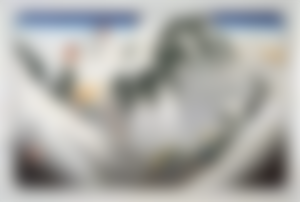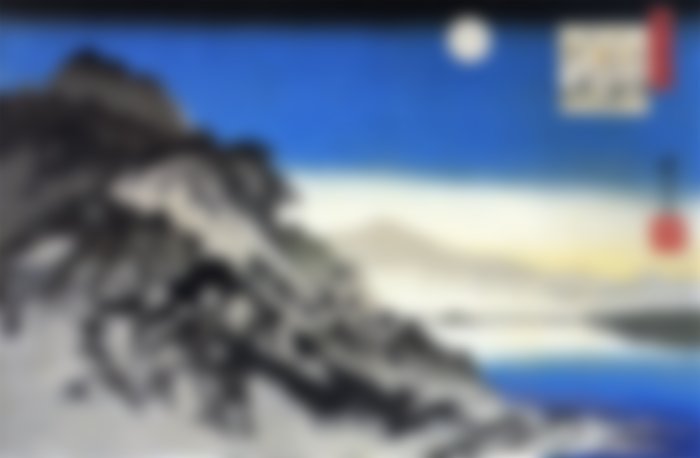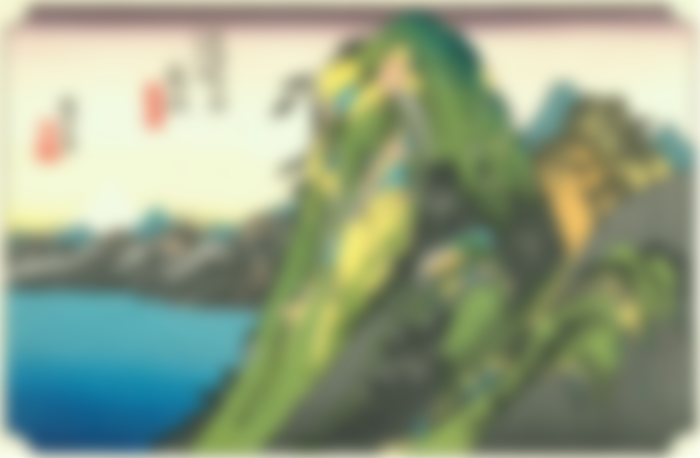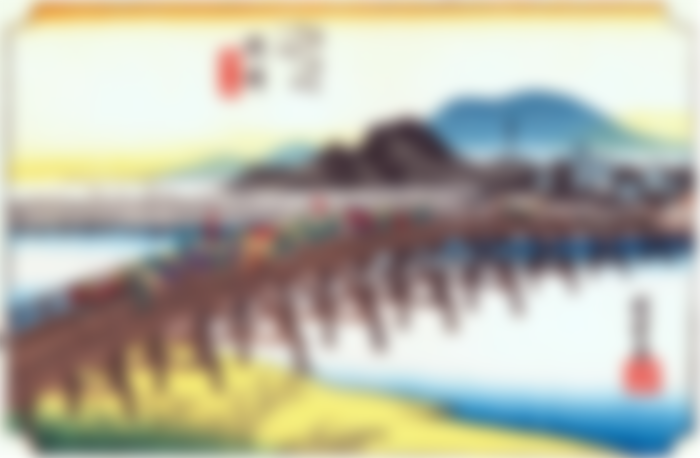Utagawa Hiroshige (1797-1858) (sometimes called Andô Hiroshige) is known mainly for landscapes and kacho-e (flower and bird prints), but in the beginning of his career, before he really found his speciality, he made prints in the common ukiyo-e genres. With the landscapes, however, came several innovations, both in composition, subject and technique. Hiroshige is rightly considered as one of the greatest masters of woodcut.
Initially, the motives of ukiyo-e did not include landscapes; they were introduced by Utagawa Toyoharu (1735?-1814) and by Hokusai. However, Hiroshige would become the great landscape master of ukiyo-e, and he established it as a sub-genre, called fūkei-ga.

Hiroshige is one of the few Japanese woodcut masters who have been famous in the West, even beyond the small circle of people who are especially interested in Japanese art. He had great influence on the French Impressionists, some Russian art, and several other European artists. He is in the topmost world elite as a landscape artist.
Utagawa Hiroshige was the son of Andô Gen'emon, who was the warden of a fire brigade, a position Hiroshige inherited when his father retired and handed it over to his own son some time during the 1820s. (Some sources claim that Hiroshige's brother held the position between Hiroshige and his son. I don't find the question important enough to justify extra research.)
A student of Utagawa Toyohiro since 1811, his first published work, an illustration to a book of kyôka poems, Kyôka Murasaki no maki, came in 1818.
When Utagawa Toyohiro died in 1828, Hiroshige could have changed his name to Toyohiro II, and continued the Toyohiro studio, but he didn't. Instead he left the school and began developing what would become his speciality: landscapes and natural studies.

The most famous landscape series by Hiroshige is The Fifty-three Stations of the Tōkaidō (1833-1834).
Tōkaidō, along which Hiroshige had the opportunity to travel in 1832, was the road connecting the capital of the Emperor and the capital of the Shogun, that is Kyoto and Edo (later called Tokyo).

In old Japan, travelling was forbidden if you didn't have an official permit. When crossing a station, which was a post station, the permit was examined. Hiroshige obviously had a permit and his travelling along this road resulted in the famous series, the peak of Hiroshige's production.

Another famous series is The Sixty-nine Stations of the Kisokaidō (1834-1842), which he made in collaboration with Keisai Eisen. Kisokaidō, sometimes called Nakasendō, was another major route between Edo and Kyoto.

In 1856, Hiroshige withdrew from the world to become a Buddhist monk. He died in 1858, probably from cholera. His influence on subsequent art is considerable, also in Europe.
Although landscapes were Hiroshige's speciality, let's look at one example of what possibly was his second speciality, natural studies. Here is "Scorpion fish, Isaki, and Ginger", from a series without any official title, but later called “Large Fish”. The series was created 1832-1835.

Copyright © 2020 Meleonymica/Mictorrani. All Rights Reserved.
You find all my articles on Japanese Art & Culture here.
Interested in Japanese culture? Join my community Japanese Art & Cultural History (7c1f).
You find all my writings on Read.Cash, sorted by topic, here.






good keep it up